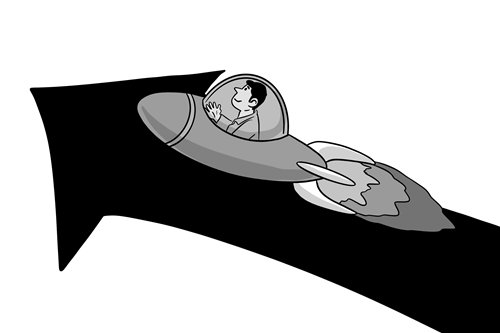HOME >> BUSINESS
China’s growth miracle over past three decades underlines strategic choice at critical moment
By Wang Jiamei Source:Global Times Published: 2019/6/3 19:58:39

Illustration: Luo Xuan/GT
The Chinese economy has experienced a period of unprecedentedly rapid growth over the past three decades. China's GDP skyrocketed to 90 trillion yuan ($13.25 trillion) in 2018 from 1.72 trillion yuan 30 years ago, with an amazing average annual growth rate of about 9 percent. The 30-year period also saw remarkable improvement in Chinese people's living standards, with the per capita disposable income of urban residents soaring from 1,374 yuan to 39,251 yuan.
Such an economic miracle was never seen before, not only in China's history, but also in world history. By comparison, due to a variety of reasons, none of the former Eastern European socialist countries has recorded any sustained strong economic growth, even after drastic political changes. Moreover, China's economic achievement also is incomparable to the developed economies, whether the UK during the Industrial Revolution, the US during the Civil War, or Germany and Japan after World War II.
Generally speaking, the Chinese economy underwent two stages of rapid development over the past 30 years. The first stage is the period between 1992 and 2000, which saw China accelerate its opening-up to the outside world. In 1992, China's late leader Deng Xiaoping made the famous tour to South China, which inspired greater and bolder steps to push forward with reform and opening-up. By implementing a series of policies to encourage the expansion of opening-up, China seized the opportunity to take over the transfer of labor-intensive industries from developed economies. Since then, foreign investment began to flow into the country on a larger scale, while foreign trade continued to snowball, contributing to the fast economic growth during the period.
The second stage is the rapid development period from 2001 to the present, which started from the important moment of China's accession to the WTO in December 2001. The Chinese economy has benefited greatly from the surge in exports since joining the WTO in 2001, with China's export value soaring from $266.1 billion in 2001 to $1.43 trillion in 2008, an increase of 5.37 times in seven years. Although exports have been one of the main engines of China's economic growth during the first decade of the 21st century, the contribution of foreign trade to economic growth has been on the decline during the second decade. From 2007 to 2017, Chinese exports grew from $1.22 trillion to $2.26 trillion, less than doubling during the first 10-year period, with the contribution of net exports to economic growth down from about 20 percent to 9.1 percent.
Looking back over the past three decades, the major reason behind China's economic success is that unlike those former Eastern European socialist countries, China has adhered to the right strategic direction for its economic take-off at critical moments.
First of all, China's reform and opening-up happened to coincide with a turning point in some developed countries toward the global economy. At that time, the manufacturing industry in developed countries was unable to bear the heavy cost burden from hiring local workers, which needed to be transferred to developing countries, and these countries needed China more than ever. By seizing the historical opportunity of accelerated globalization, China promoted its reform and development through furthering openness. With its comparative advantages in terms of geographical position, labor quality, cost, and industrial chain, the country indeed enjoyed the huge benefits of the global division of labor by unswervingly pursuing reform and opening-up.
Meanwhile, political stability has always been a prerequisite for economic development. It would have been impossible for China to make the achievements of the past 30 years had there been any political instability. China's history, culture and other conditions have determined that it cannot take the same path as some Western countries did. Past experience has made Chinese leaders realize that the top priority should always be to promote economic development and improve people's living standards in a pragmatic and consistent approach.
Of course, the economic success doesn't mean that there have been no problems facing the Chinese economy. From the ballooning inflation in the late 1980s to the serious deflation in the late 1990s, to the 2009 global financial crisis, and the current trade war, it can be said that in the past, China pulled through difficulties through deepening reform and opening-up based on its own national conditions, and this time will be no exception. The reason why the Chinese economy can create miracles is precisely because it has taken a path that suits its own national conditions, rather than blindly following the Western theory.
The author is a reporter with the Global Times. bizopinion@globaltimes.com.cn
RELATED ARTICLES:
- Thirty years on, Chinese youth more confident of country's future
- Industry, agriculture and consumption serve as bedrocks of Chinese economy
- Chinese economy will sail through storms as transformation and upgrades keep it vigorous
- Chinese economy sets sail for a long, confident journey toward prosperity
Posted in: EXPERT ASSESSMENT